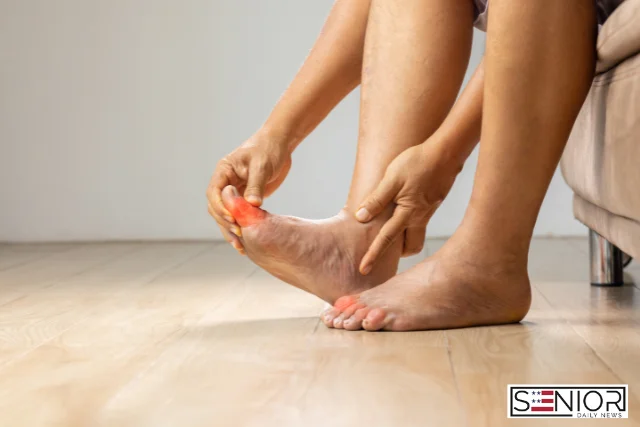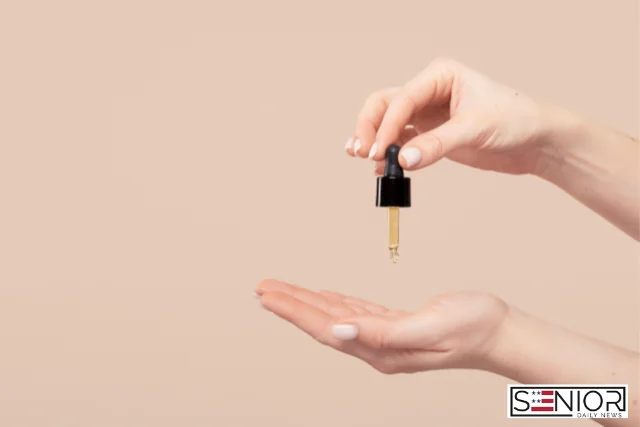Senior Foot Health: Most Common Problems and Solutions

As we age, our bodies go through countless changes, and our feet are no exception. For seniors, maintaining foot health is more than just comfort—it’s about mobility, independence, and overall quality of life. Foot issues in older adults can lead to pain, limited activity, and even serious health complications if left untreated. Understanding the most common problems and their solutions can make all the difference in staying active and healthy well into later years.
Why Foot Health Matters for Seniors
Our feet support us through thousands of steps every day. Over the decades, wear and tear, medical conditions, and lifestyle habits take a toll. By age 60 and beyond, problems like arthritis, circulation issues, and reduced skin elasticity can all affect foot health. Healthy feet mean better balance, reduced risk of falls, and more freedom to enjoy daily activities. Poor foot health, however, can lead to discomfort, infections, and mobility loss. For seniors in the United States, prioritizing foot care should be an essential part of overall health management.
Most Common Foot Problems in Seniors
1. Arthritis in the Feet and Ankles
Arthritis is one of the leading causes of chronic foot pain among older adults. Osteoarthritis and rheumatoid arthritis both affect joints in the feet and ankles, causing stiffness, swelling, and difficulty walking. Seniors may find that shoes no longer feel comfortable or that their mobility decreases over time.
Solutions:
- Supportive footwear with cushioning and arch support
- Low-impact exercises like swimming or walking
- Anti-inflammatory medications or doctor-prescribed treatments
- Physical therapy to maintain flexibility
2. Bunions
Bunions form when the joint at the base of the big toe becomes enlarged, often causing the toe to angle inward. They can cause discomfort, swelling, and difficulty wearing shoes. Seniors are especially prone due to years of pressure on the feet and, in some cases, genetics.
Solutions:
- Wearing wider shoes with soft material
- Using bunion pads or shoe inserts
- Ice packs to reduce swelling
- In severe cases, surgical correction
3. Corns and Calluses
Corns and calluses are thickened layers of skin that form due to repeated friction or pressure. While they may seem minor, they can cause significant pain for seniors, especially when walking.
Solutions:
- Regular moisturizing to keep skin soft
- Pumice stones for gentle removal
- Properly fitting shoes to prevent pressure spots
- Podiatrist visits for safe trimming
4. Plantar Fasciitis
This painful condition is caused by inflammation of the tissue that connects the heel bone to the toes. Seniors often describe sharp heel pain, especially in the morning.
Solutions:
- Rest and stretching exercises
- Supportive shoes or orthotic inserts
- Ice therapy
- Physical therapy for long-term management
5. Ingrown Toenails
Ingrown toenails occur when the nail grows into the skin, leading to redness, swelling, and infection. Seniors may struggle with this issue due to difficulty trimming nails properly or because of decreased eyesight and flexibility.
Solutions:
- Soaking feet in warm water to reduce swelling
- Wearing shoes that don’t crowd the toes
- Professional nail trimming by a podiatrist
- Antibiotic treatment if infection occurs
6. Fungal Infections
Toenail fungus and athlete’s foot are common among seniors because aging nails become thicker and more vulnerable to infection. These conditions can be unsightly, uncomfortable, and persistent.
Solutions:
- Keeping feet dry and clean
- Antifungal sprays, creams, or oral medications
- Wearing moisture-wicking socks
- Avoiding walking barefoot in public areas
7. Poor Circulation and Neuropathy
Many seniors, especially those with diabetes, struggle with poor circulation and neuropathy (nerve damage). These conditions may cause numbness, tingling, or loss of sensation in the feet, making it harder to detect injuries. Left untreated, they can lead to ulcers or infections.
Solutions:
- Regular foot exams to spot injuries early
- Proper diabetes management
- Compression socks to improve circulation
- Consulting a doctor about medications or therapies
8. Heel Spurs
Heel spurs are bony growths that develop on the underside of the heel. They can cause stabbing pain when walking or standing for long periods.
Solutions:
- Orthotic shoe inserts
- Gentle stretching exercises
- Rest and ice therapy
- In rare cases, surgical removal
9. Dry Skin and Cracked Heels
With age, the skin loses moisture and elasticity, leading to dryness and cracked heels. While not always painful, these cracks can sometimes bleed or become infected.
Solutions:
- Daily use of moisturizing creams
- Avoiding harsh soaps
- Wearing socks to lock in moisture overnight
- Visiting a podiatrist for severe cracks
10. Flat Feet and Fallen Arches
The natural arch of the foot can weaken over time, leading to flat feet. This condition can cause pain, imbalance, and difficulty walking.
Solutions:
- Orthotic inserts or arch supports
- Strengthening exercises for foot muscles
- Supportive footwear
- Consulting a podiatrist for advanced care
Everyday Tips for Maintaining Senior Foot Health
- Inspect your feet daily: Look for cuts, blisters, or unusual changes.
- Wear proper footwear: Shoes should have cushioning, arch support, and enough room for toes.
- Maintain good hygiene: Wash and dry feet daily to prevent fungal infections.
- Stay active: Regular exercise helps circulation and reduces stiffness.
- Schedule regular podiatrist visits: Professional care ensures early detection of potential problems.
- Keep toenails trimmed: Always cut straight across to prevent ingrown toenails.
- Moisturize: Prevent dry skin and cracks by applying cream or lotion daily.
When to See a Doctor
While many foot issues can be managed with home care, seniors should see a podiatrist or healthcare provider if they experience:
- Severe or persistent pain
- Signs of infection (redness, swelling, pus)
- Difficulty walking or maintaining balance
- Sudden changes in foot appearance
Early medical attention can prevent complications and keep seniors mobile and healthy.
FAQs on Senior Foot Health
Q1: Why is foot health so important for seniors?
Foot health impacts balance, mobility, and independence. Poor foot health can increase the risk of falls and limit daily activities.
Q2: How often should seniors see a podiatrist?
Most seniors should schedule a foot check at least once a year. Those with diabetes or circulation issues may need more frequent visits.
Q3: What type of shoes are best for older adults?
Supportive shoes with cushioning, non-slip soles, and enough toe room are ideal. Avoid high heels, tight shoes, or worn-out footwear.
Q4: Can exercise help with senior foot problems?
Yes. Gentle exercises like stretching, walking, or swimming improve circulation, strengthen muscles, and reduce stiffness in the feet.
Q5: How can seniors prevent fungal infections?
Keep feet clean and dry, wear moisture-wicking socks, and avoid walking barefoot in public places like pools or gyms.
Q6: Are foot problems always a normal part of aging?
Not always. While some issues are more common with age, regular care, proper footwear, and medical attention can prevent or reduce many foot problems.
Image Source: Canva






